Abstract
The in vitro effect of cefoxitin, cefamandole, cephalexin, and cephalothin was tested against 645 strains of bacteria recently isolated from clinical sources. Against gram-positive organisms cephalothin and cefamandole were the most effective, generally being three- to fourfold more active than cephalexin or cefoxitin. Enterococci were not inhibited by less than 25 μg of any of the antibiotics per ml. Against Enterobacteriaceae, cefoxitin and cefamandole were the most active. An exception was the Enterobacter strains, against which cefoxitin was the least effective. None of the Pseudomonas aeruginosa strains were susceptible to 100 μg of any of the cephalosporins per ml. Cefamandole was the most active agent against Neisseria meningitidis and Neisseria gonorrhoeae. It was also the most effective agent against Haemophilus influenzae, even when taking into account a threefold inoculum effect.
Full text
PDF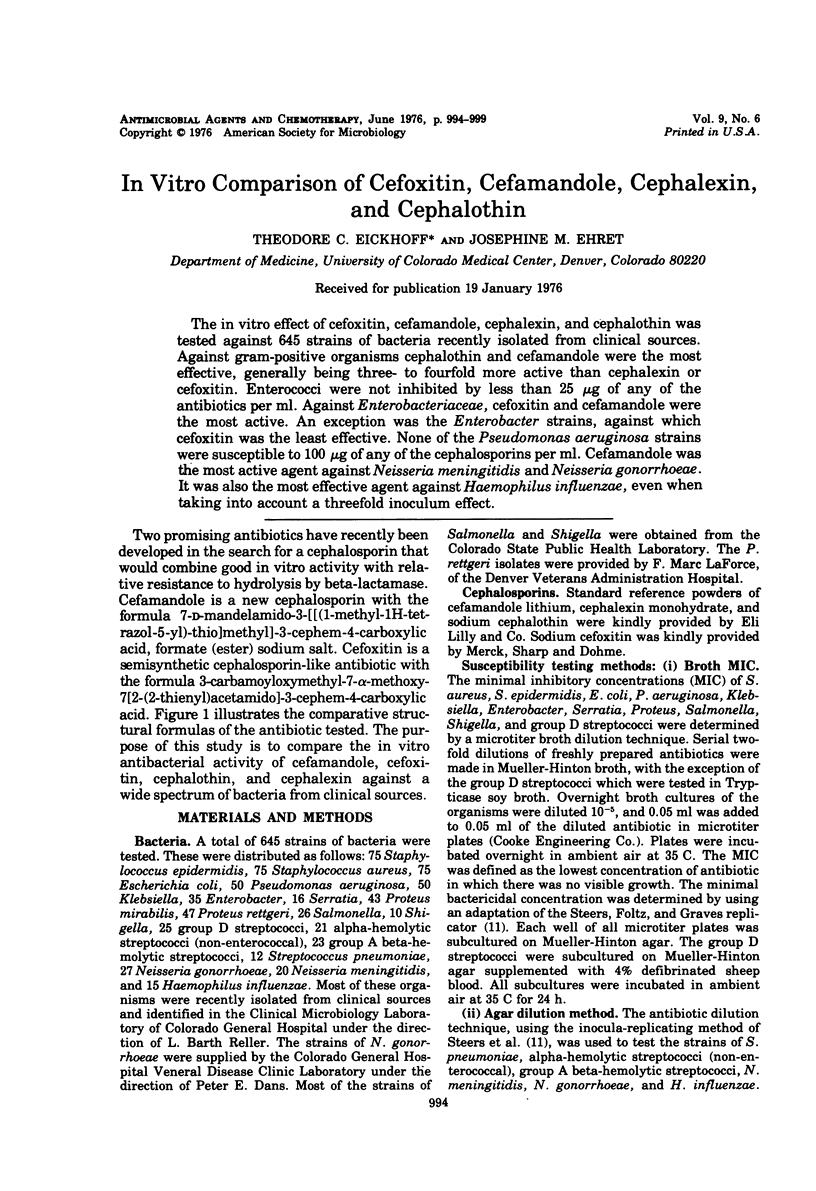
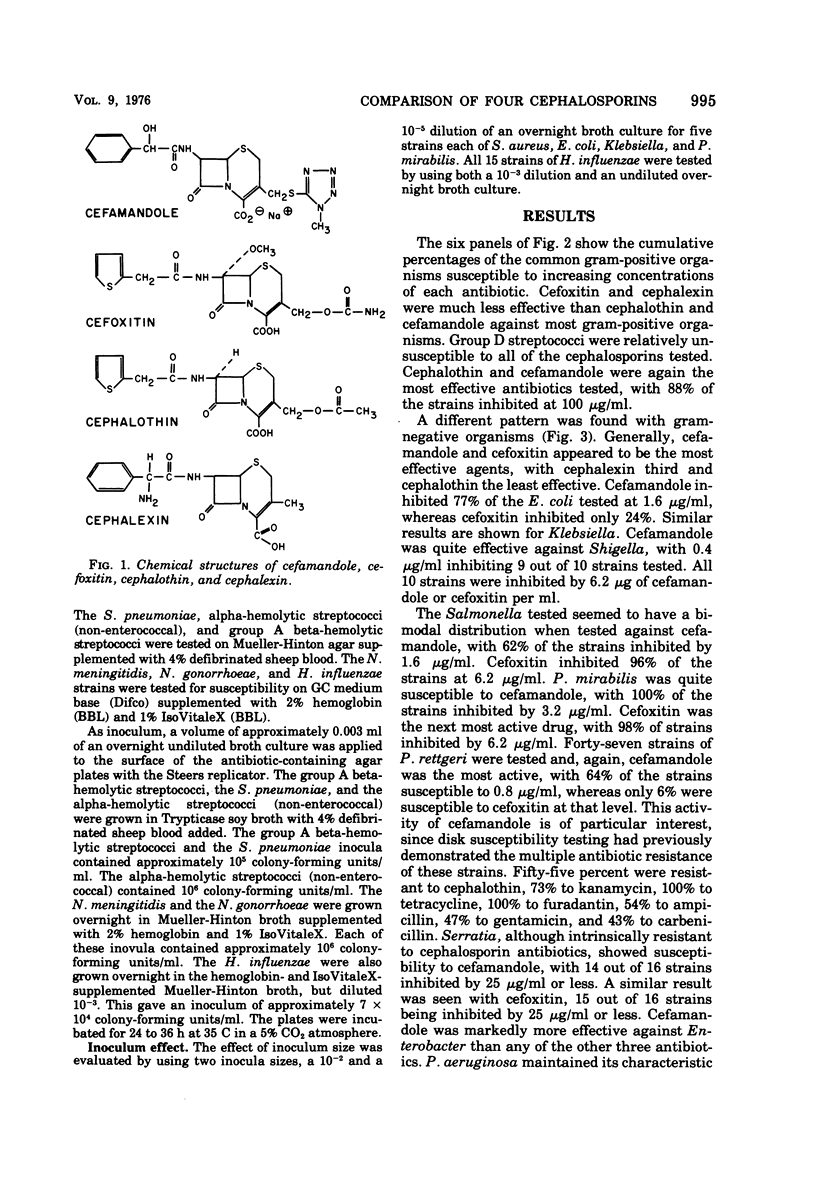
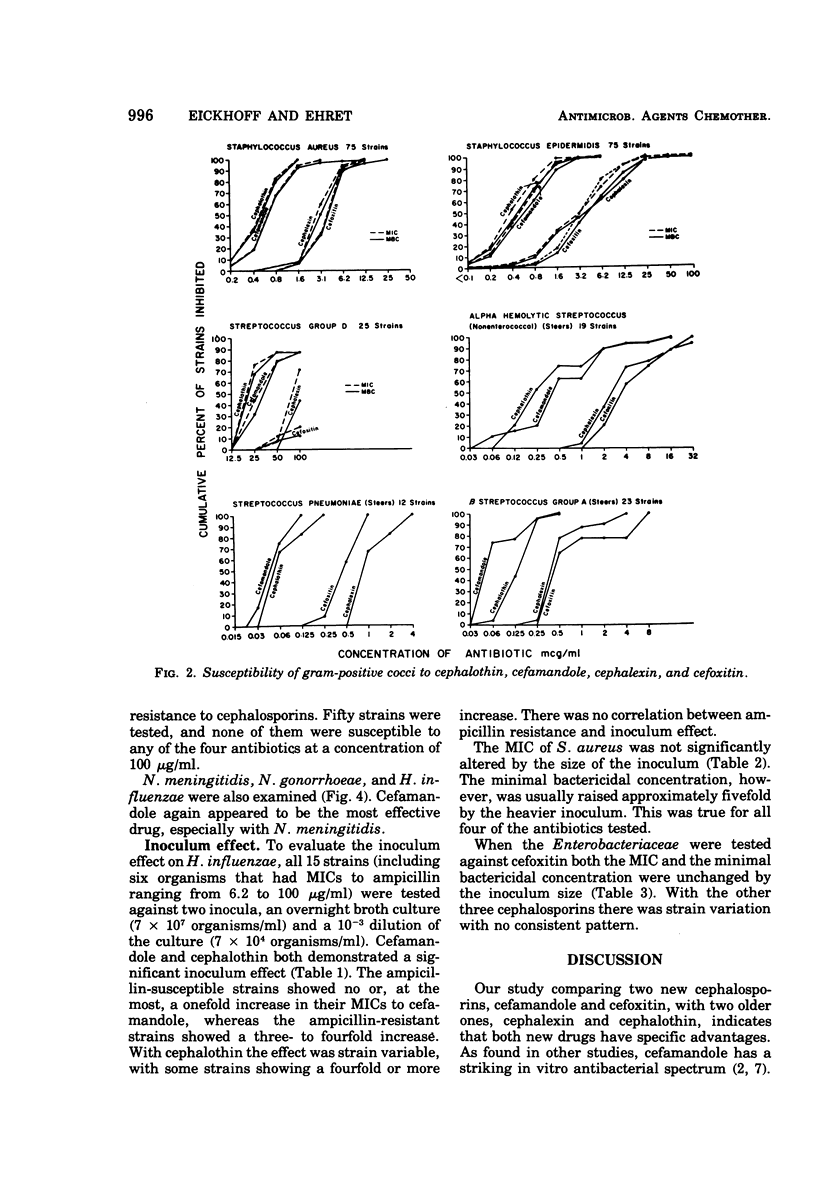
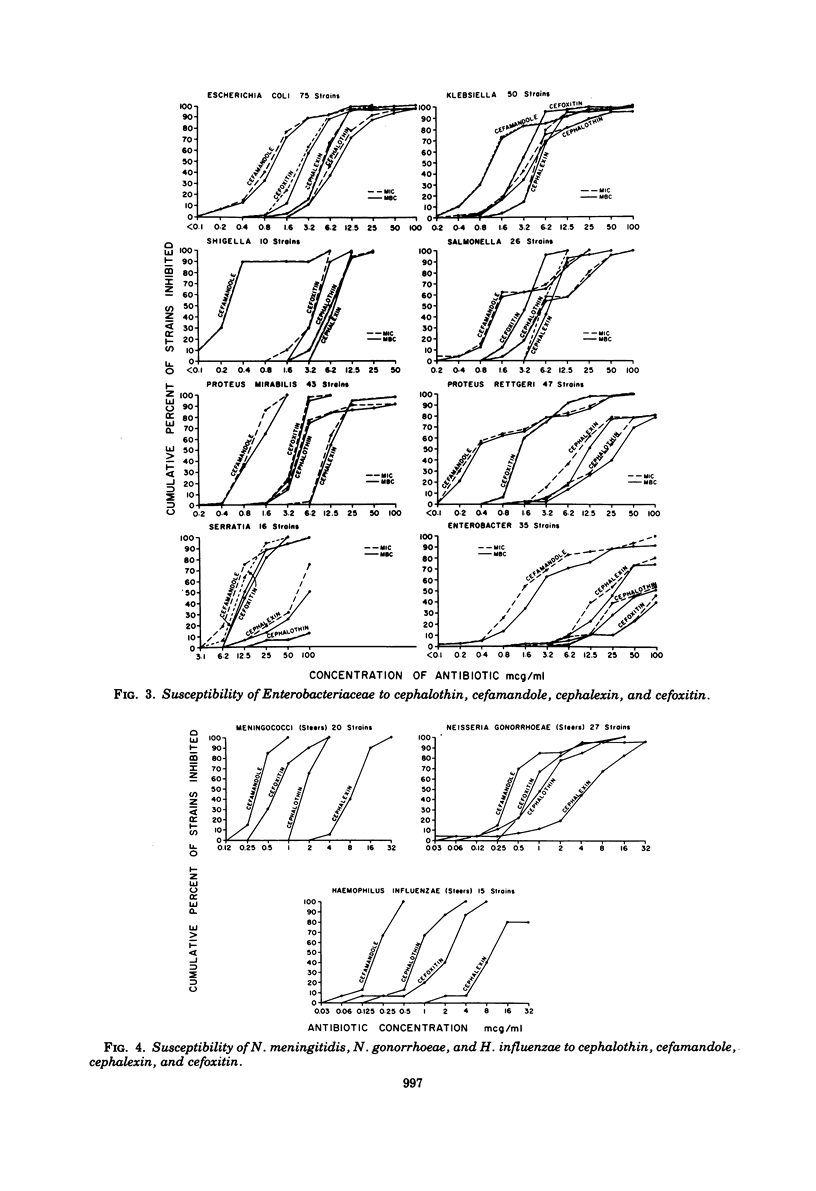
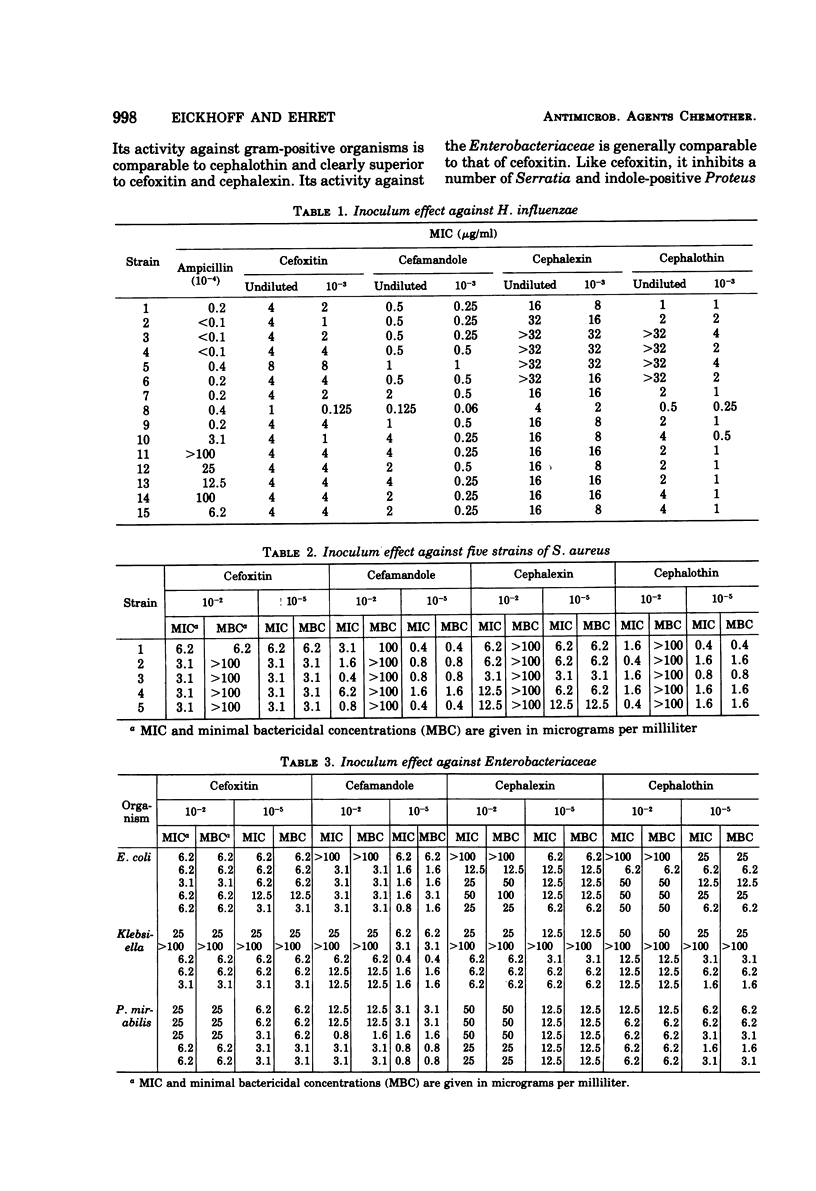
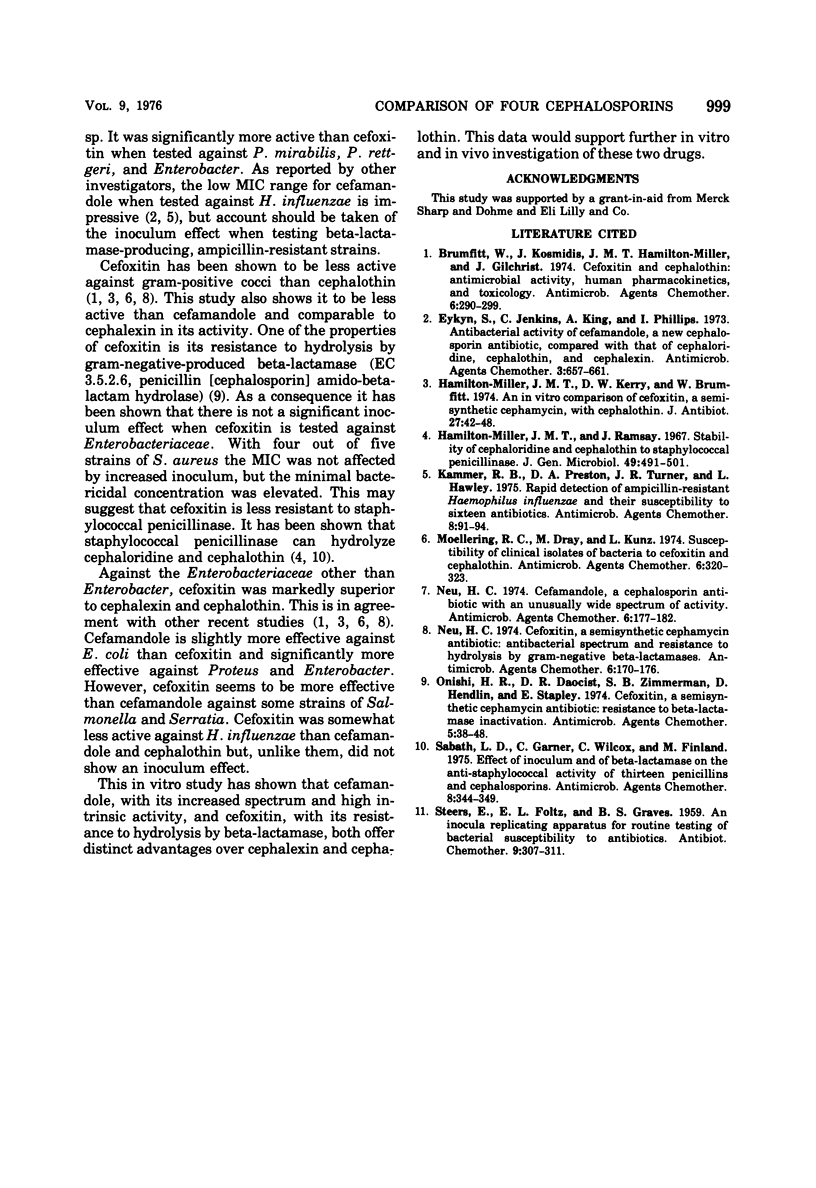
Selected References
These references are in PubMed. This may not be the complete list of references from this article.
- Brumfitt W., Kosmidis J., Hamilton-Miller J. M., Gilchrist J. N. Cefoxitin and cephalothin: antimicrobial activity, human pharmacokinetics, and toxicology. Antimicrob Agents Chemother. 1974 Sep;6(3):290–299. doi: 10.1128/aac.6.3.290. [DOI] [PMC free article] [PubMed] [Google Scholar]
- Eykyn S., Jenkins C., King A., Phillips I. Antibacterial activity of cefamandole, a new cephalosporin antibiotic, compared with that of cephaloridine, cephalothin, and cephalexin. Antimicrob Agents Chemother. 1973 Jun;3(6):657–661. doi: 10.1128/aac.3.6.657. [DOI] [PMC free article] [PubMed] [Google Scholar]
- Hamilton-Miller J. M., Kerry D. W., Brumfitt W. An in vivo comparison of cefoxitin, a semi-synthetic cephamycin, with cephalothin. J Antibiot (Tokyo) 1974 Jan;27(1):42–48. doi: 10.7164/antibiotics.27.42. [DOI] [PubMed] [Google Scholar]
- Kammer R. B., Preston D. A., Turner J. R., Hawley L. C. Rapid detection of ampicillin-resistant Haemophilus influenzae and their susceptibility to sixteen antibiotics. Antimicrob Agents Chemother. 1975 Jul;8(1):91–94. doi: 10.1128/aac.8.1.91. [DOI] [PMC free article] [PubMed] [Google Scholar]
- Moellering R. C., Jr, Dray M., Kunz L. J. Susceptibility of clinical isolates of bacteria to cefoxitin and cephalothin. Antimicrob Agents Chemother. 1974 Sep;6(3):320–323. doi: 10.1128/aac.6.3.320. [DOI] [PMC free article] [PubMed] [Google Scholar]
- Neu H. C. Cefamandole, a cephalosporin antibiotic with an unusually wide spectrum of activity. Antimicrob Agents Chemother. 1974 Aug;6(2):177–182. doi: 10.1128/aac.6.2.177. [DOI] [PMC free article] [PubMed] [Google Scholar]
- Neu H. C. Cefoxitin, a semisynthetic cephamycin antibiotic: antibacterial spectrum and resistance to hydrolysis by gram-negative beta-lactamases. Antimicrob Agents Chemother. 1974 Aug;6(2):170–176. doi: 10.1128/aac.6.2.170. [DOI] [PMC free article] [PubMed] [Google Scholar]
- Onishi H. R., Daoust D. R., Zimmerman S. B., Hendlin D., Stapley E. O. Cefoxitin, a semisynthetic cephamycin antibiotic: resistance to beta-lactamase inactivation. Antimicrob Agents Chemother. 1974 Jan;5(1):38–48. doi: 10.1128/aac.5.1.38. [DOI] [PMC free article] [PubMed] [Google Scholar]
- Sabath L. D., Garner C., Wilcox C., Finland M. Effect of inoculum and of beta-lactamase on the anti-staphylococcal activity of thirteen penicillins and cephalosporins. Antimicrob Agents Chemother. 1975 Sep;8(3):344–349. doi: 10.1128/aac.8.3.344. [DOI] [PMC free article] [PubMed] [Google Scholar]


